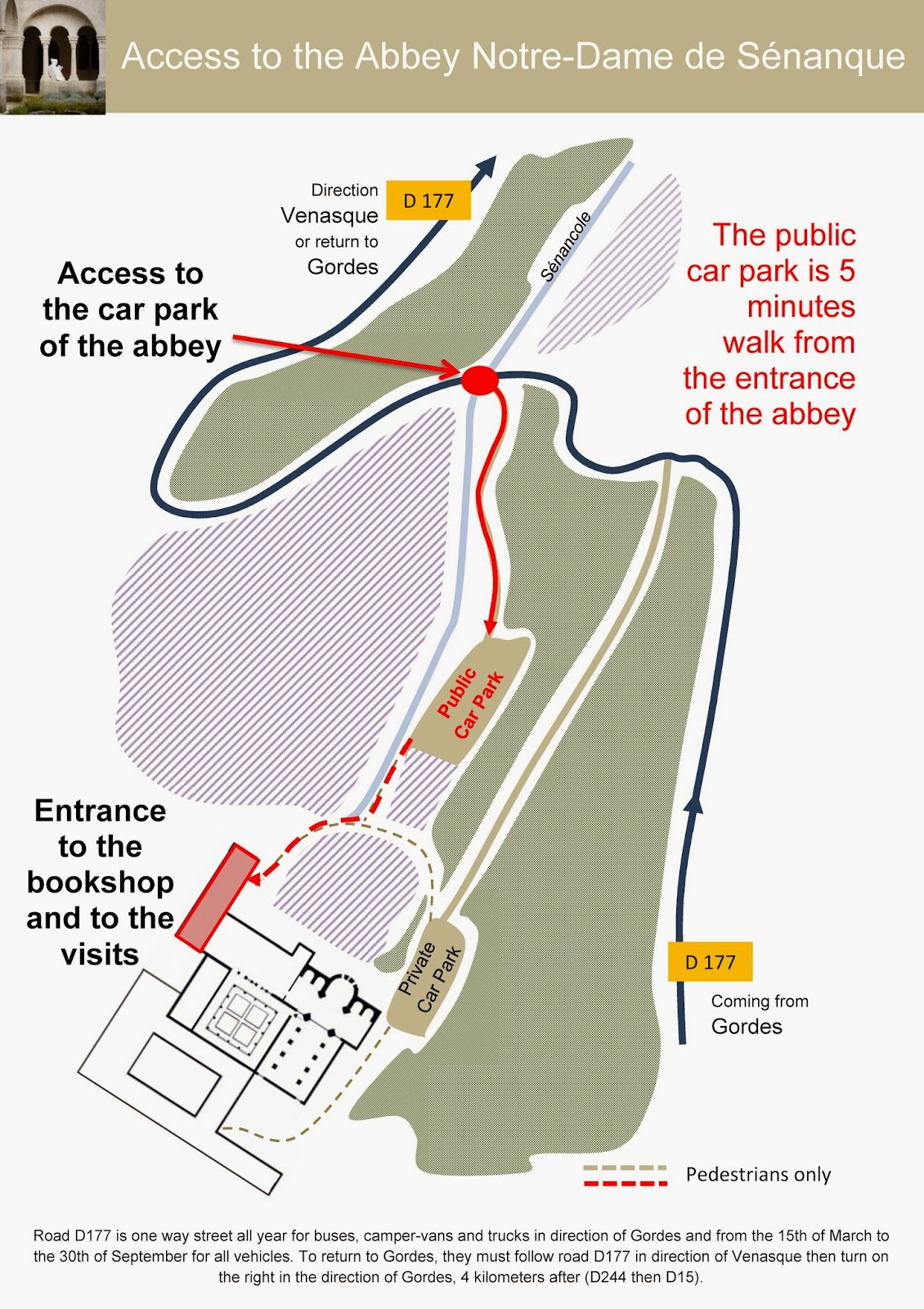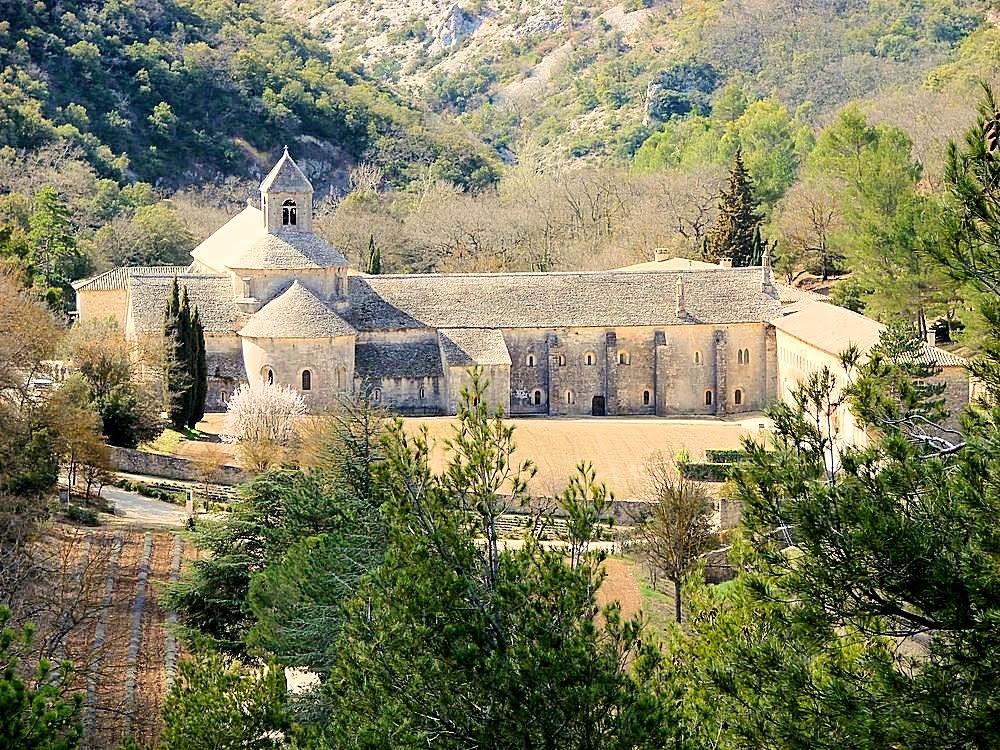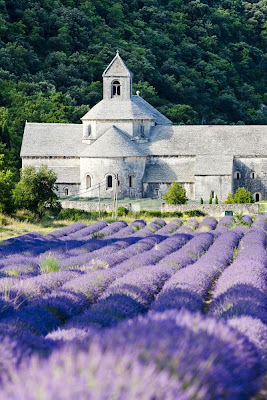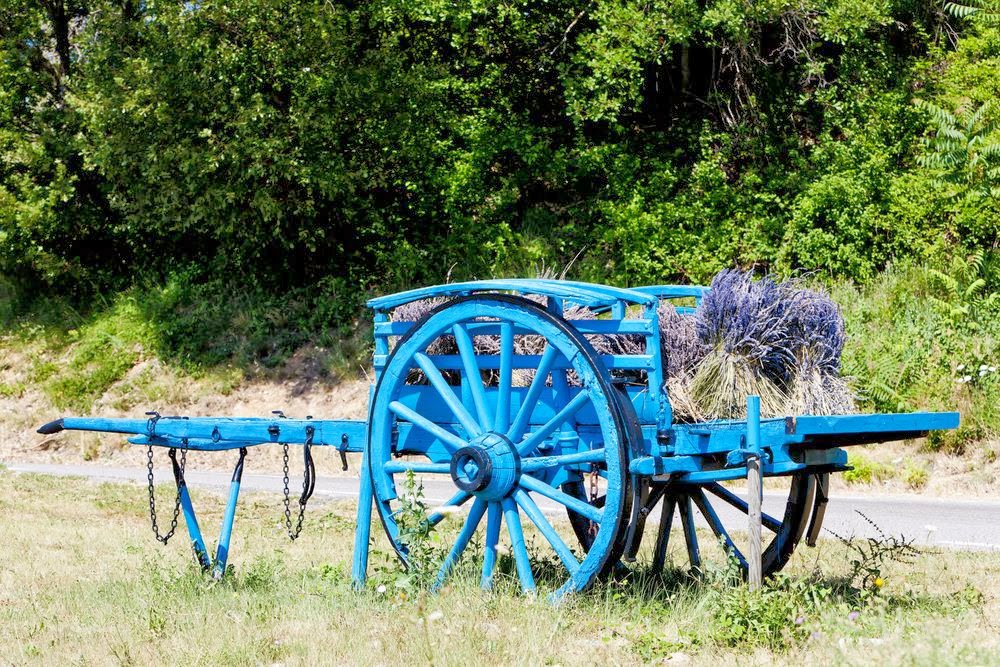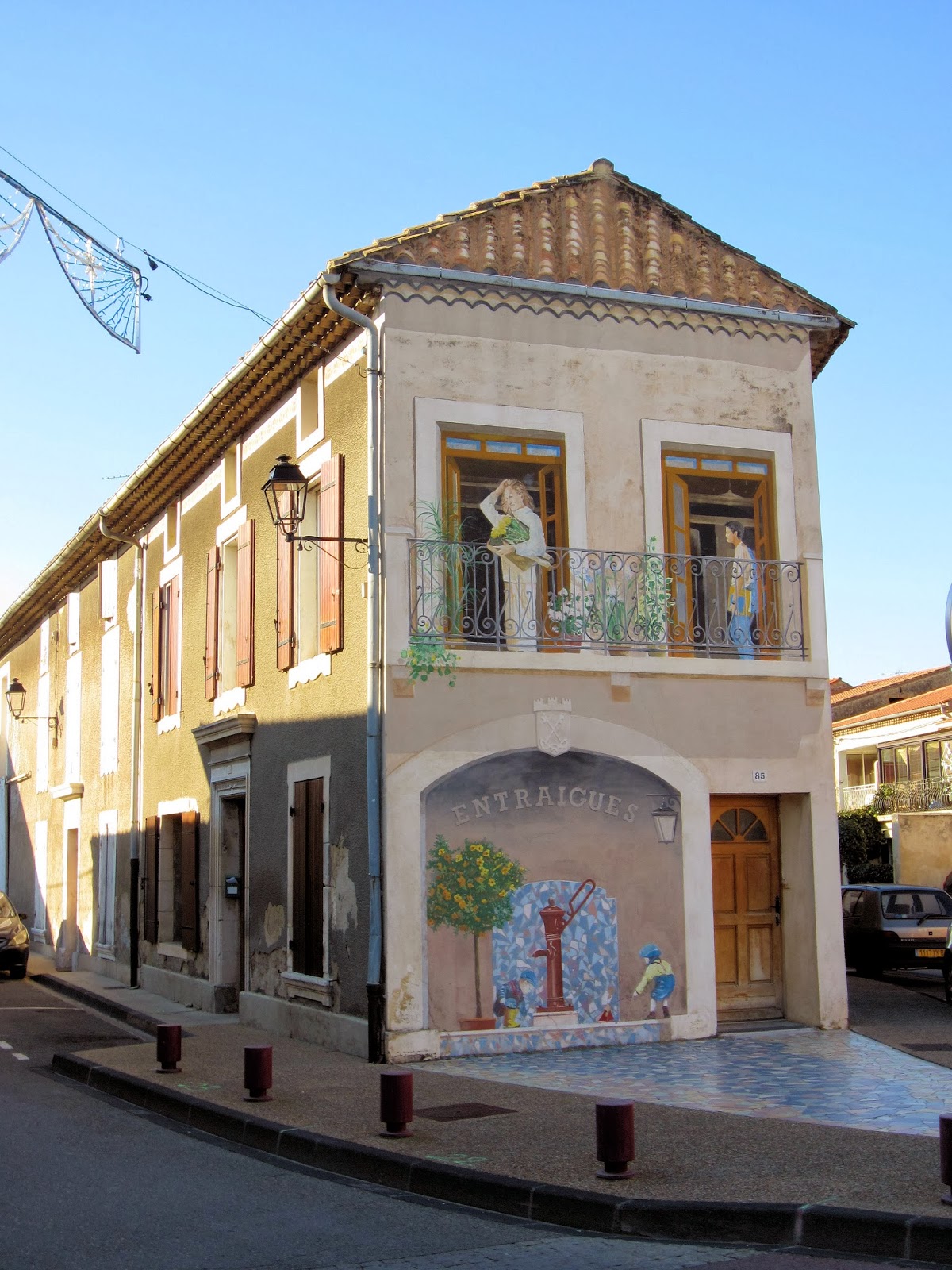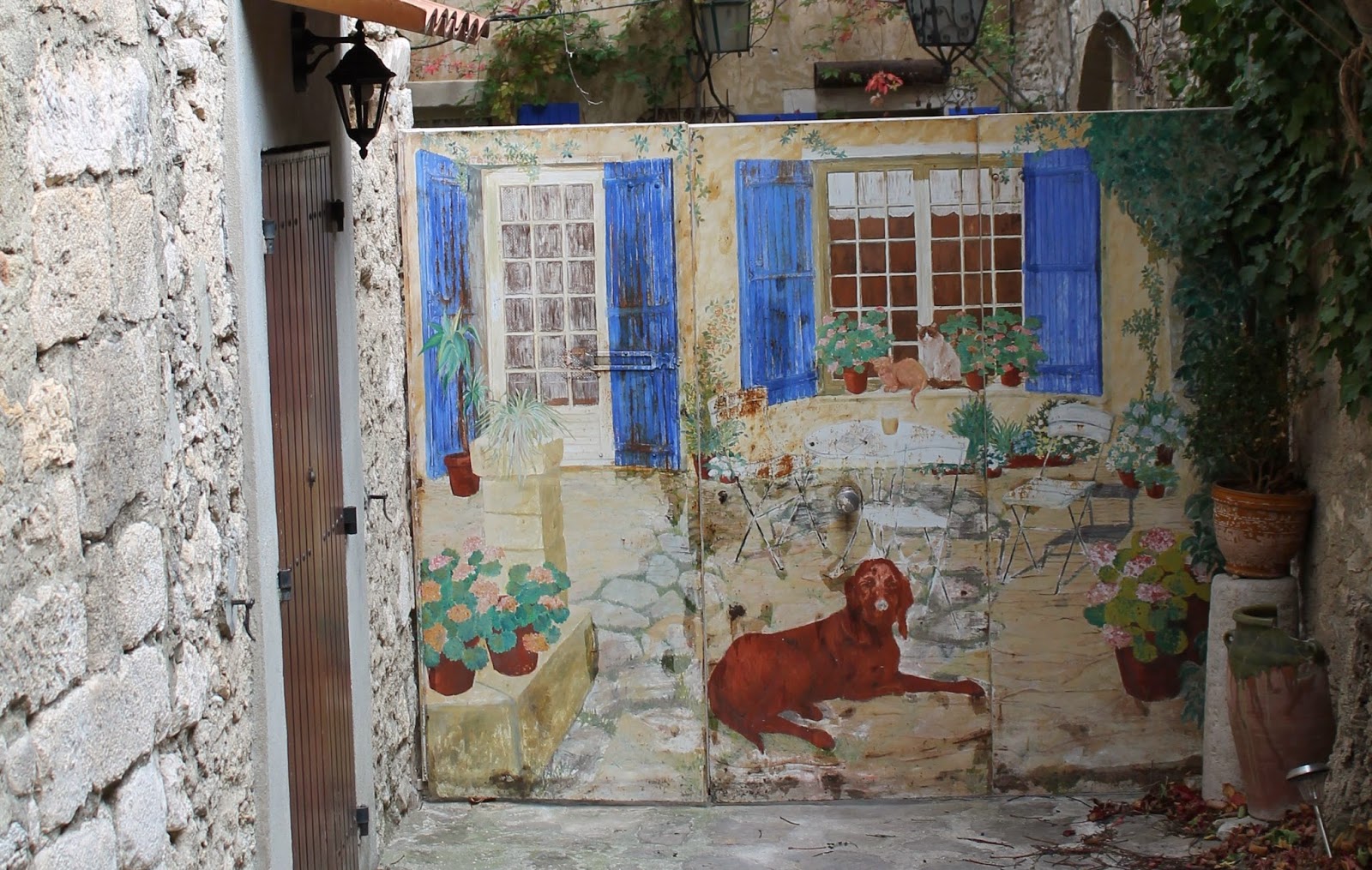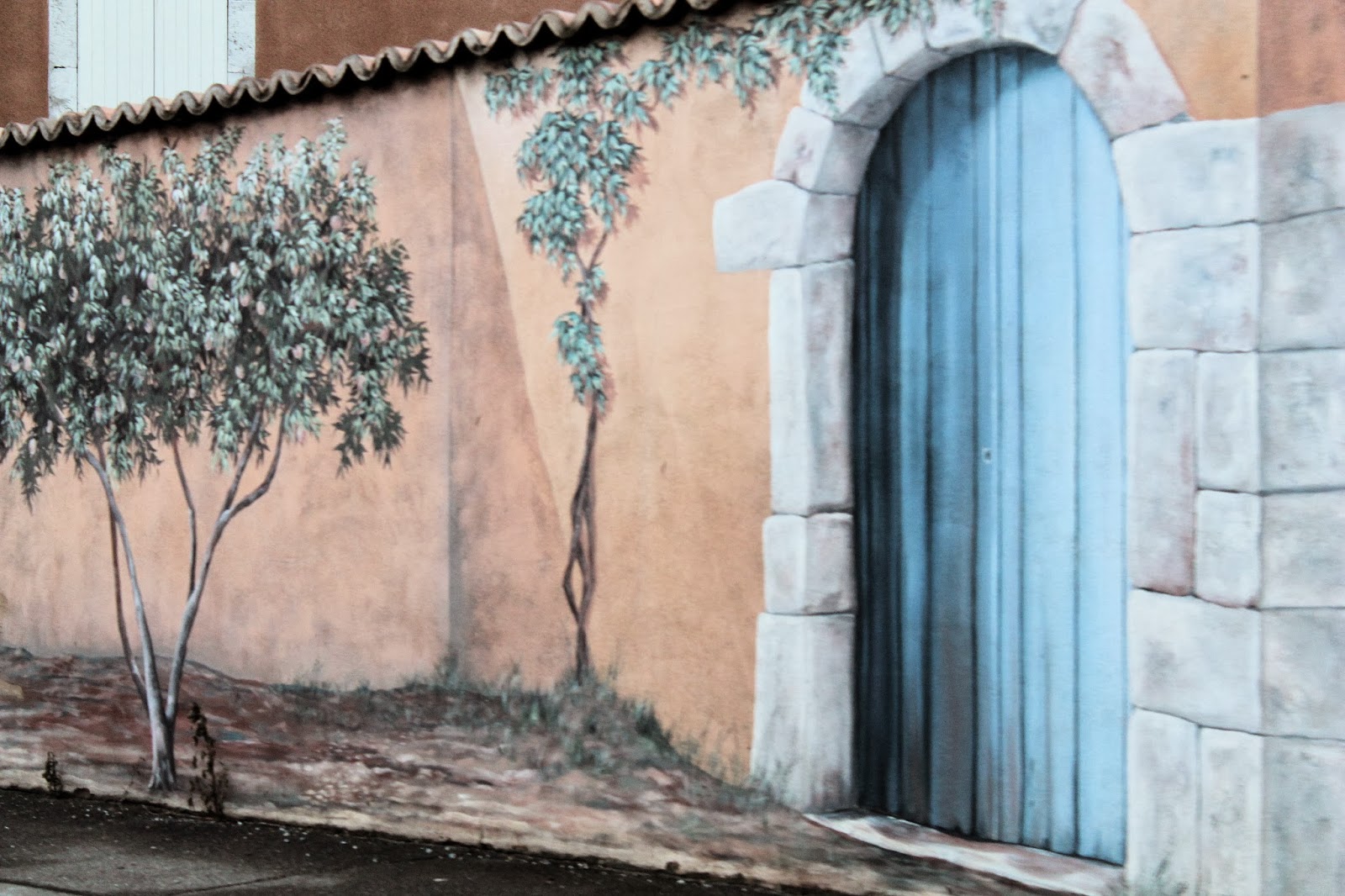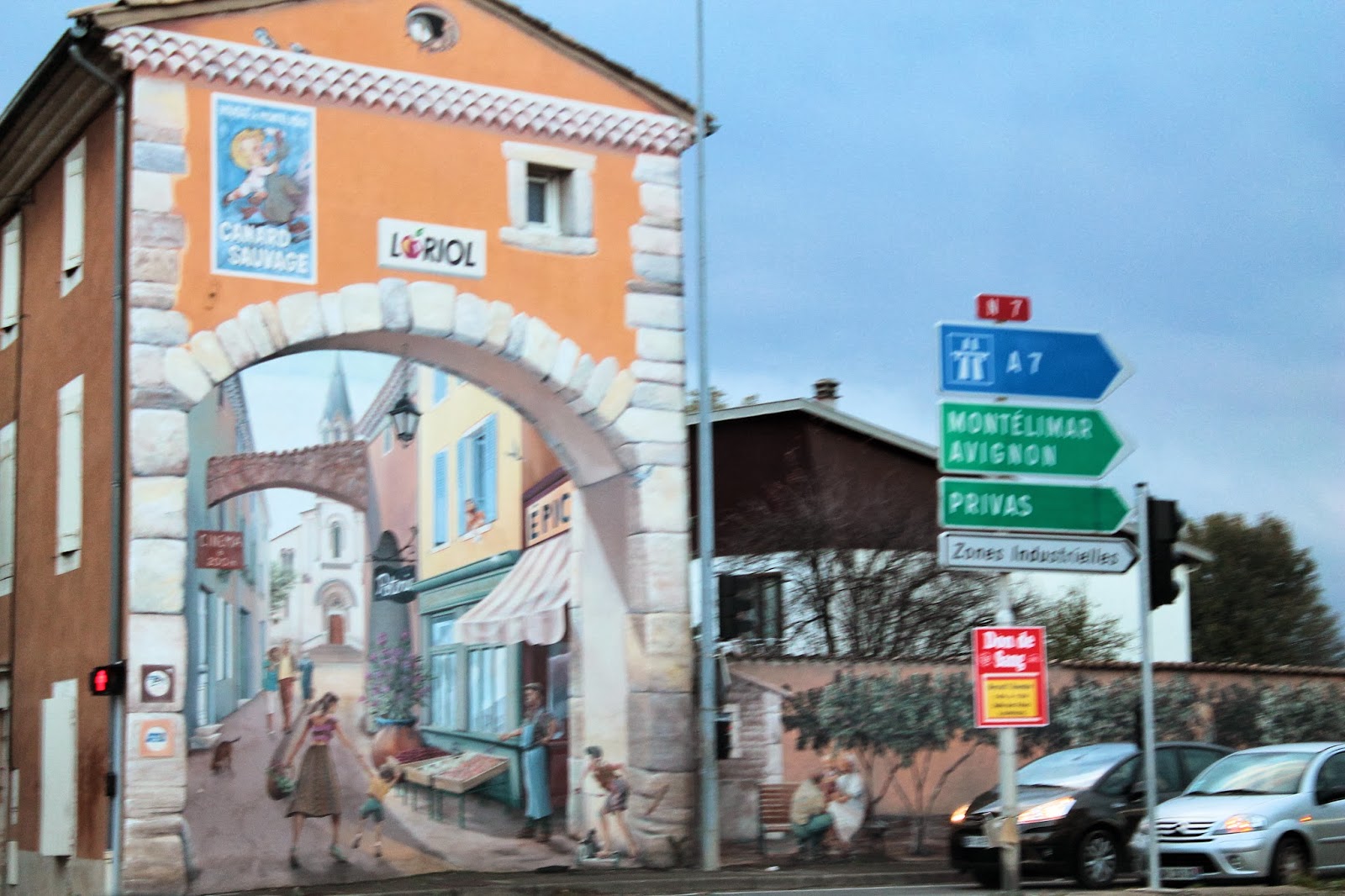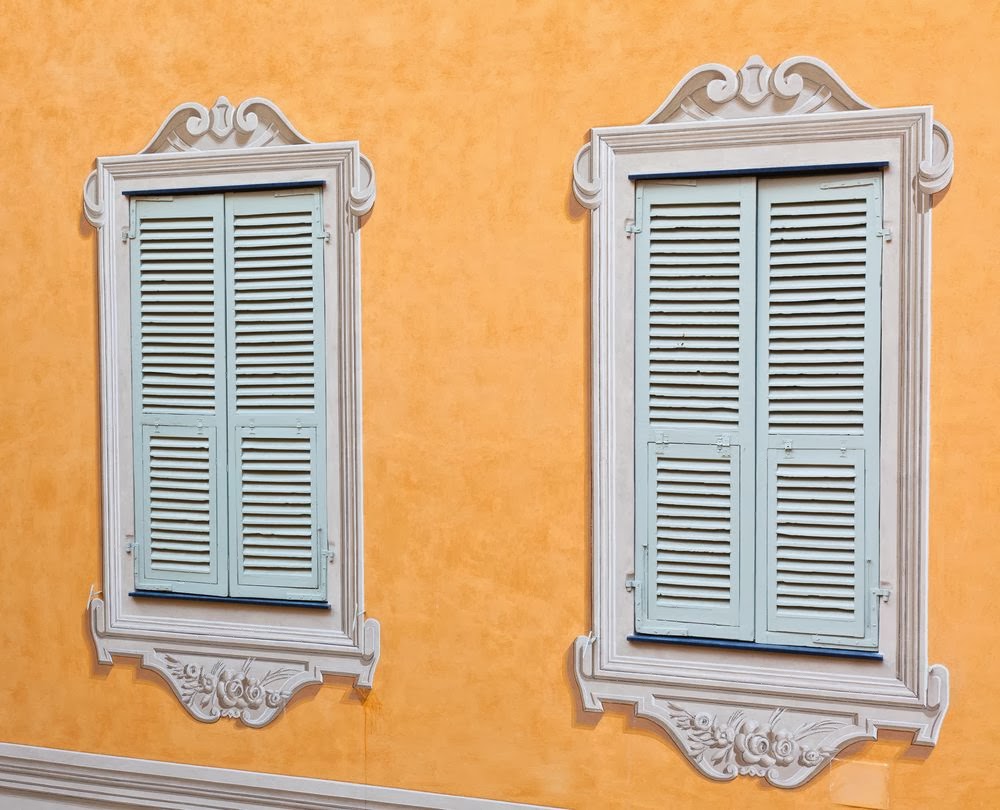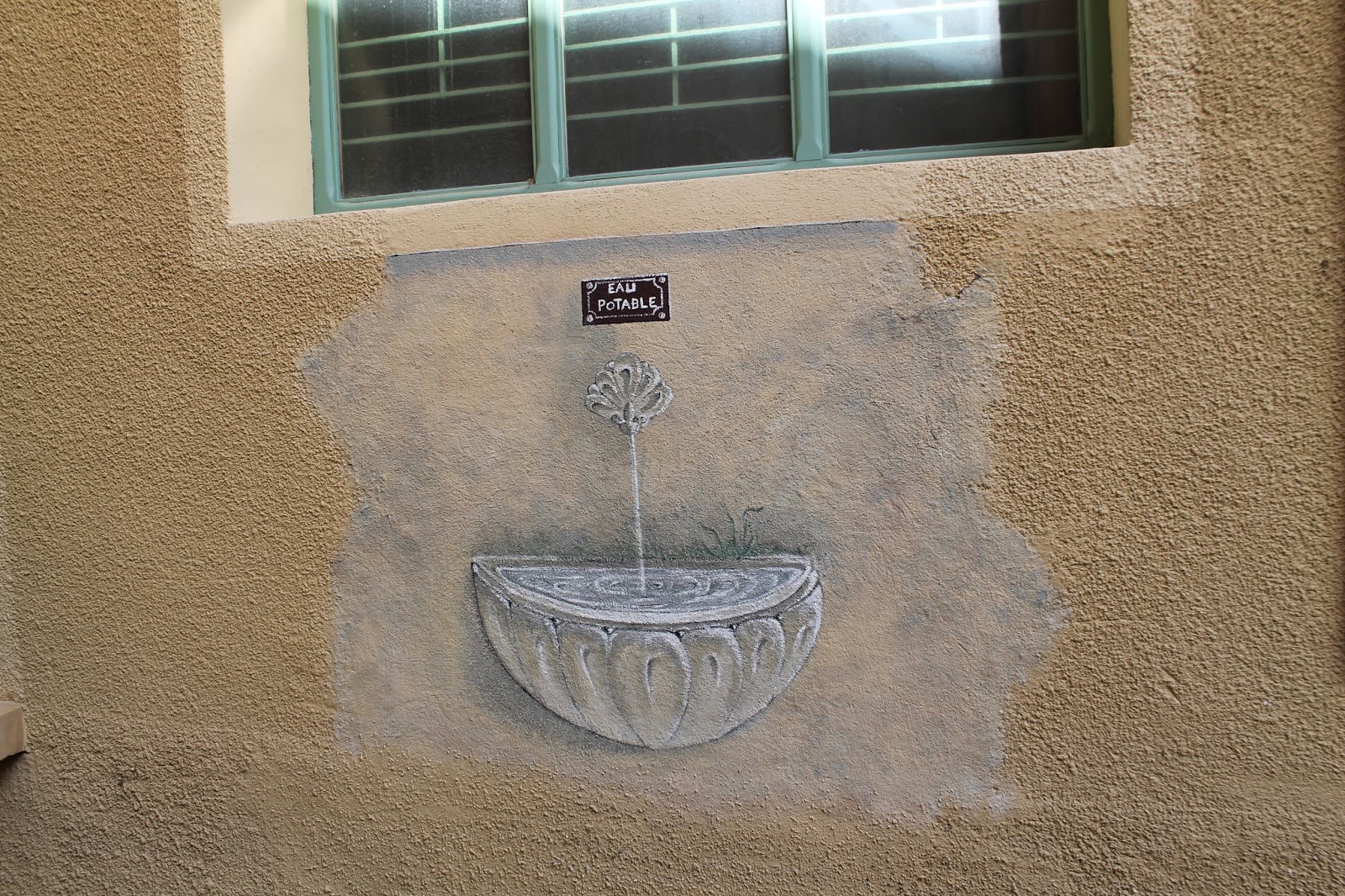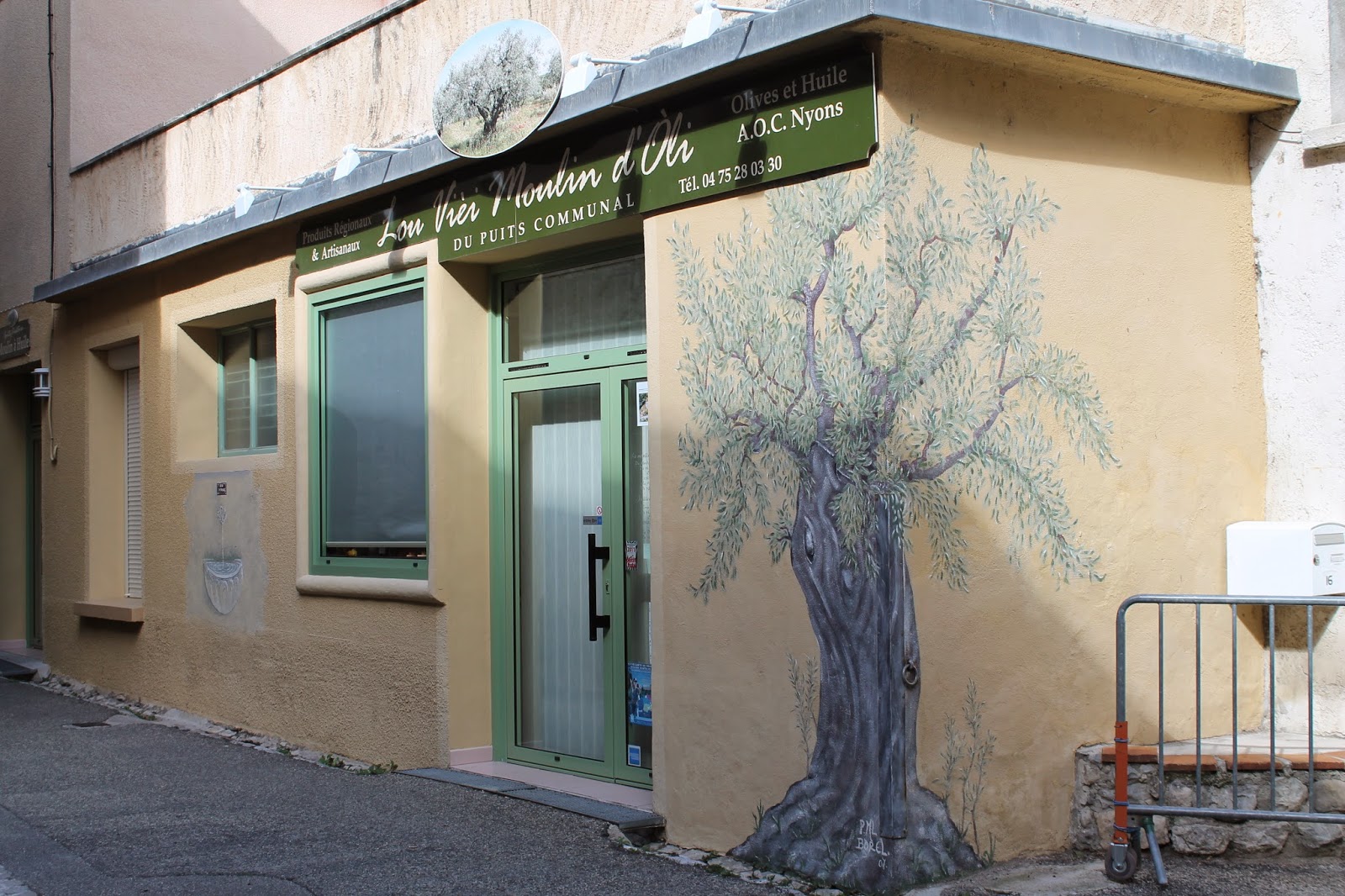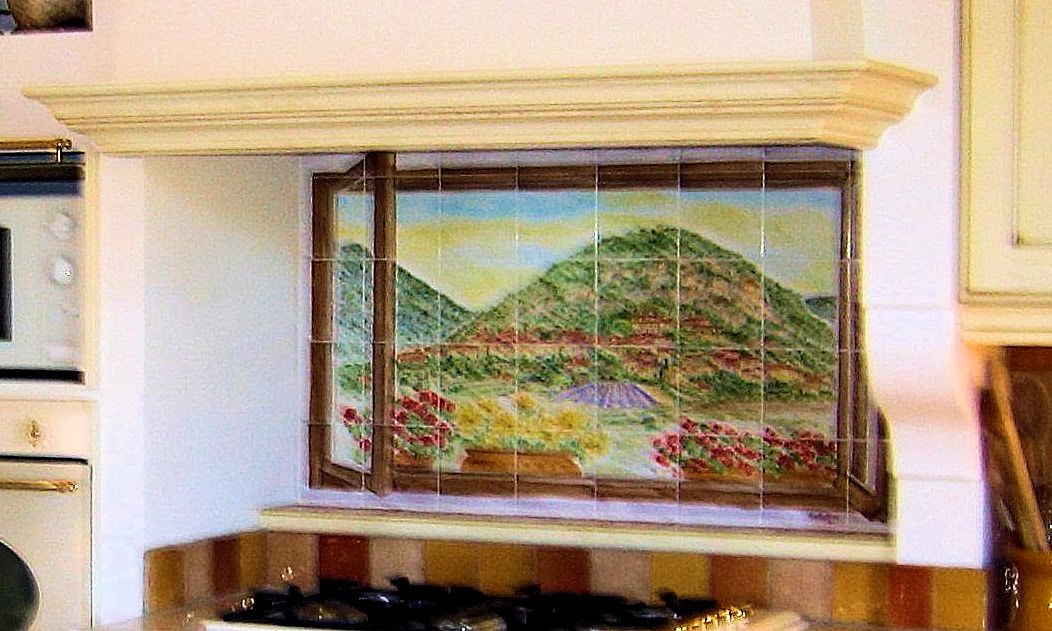Saignon to Sault and Montbrun les Bains - then back to Sablet
 |
| During lavender season it is not uncommon to see sights like this in lavender country - bundles of lavender stacked on a cart and left to dry in the warm Provencal sunshine. |
 |
| Looking down from the terrace of an outdoor cafe in Sault |
 |
| Looking up at the perched village of Sault from the lavender fields |
 |
| Some of the items you might see at the Lavender Festival in Sault |
| The Lavender fields that surround the village of Montbrun-les-Bains, can be seen as you approach the village |
 |
| Looking up at the village as you approach, with its Renaissance Chateau and fortification |
 |
| The village has many 16th Century buildings made of a light brown stone that cling to the sides of the hill |
As it's name suggests, the buildings in Montbrun-les-Bains are
of a light brown color that creep their way up the hill. The village is
dominated by the ruins of the 16th Century Renaissance Chateau
Dupuy-Montbrun, home of the well known Protestant commander, Charles
Dupuy-Montbrun who built it to replace the old Medieval Chateau, that was
demolished by Royal decree in 1560. The new chateau was one of the largest,
most beautiful chateaux in the region, and he lived there until it
was badly damaged during the Religious Wars, when he was captured by the
Catholic Baron de Gordes of Provence and decapitated.
While the Renaissance chateau is not
open to the public, as it remains in private ownership, one can get an idea of
its splendor by walking around the perimeter of the building to view the
exterior of the chateau.
Entry to the old village is
through the gate of the 14th Century Gate of the Clock. Once through,
follow the walking path. The village church which was originally
built in the 14th Century as a Catholic Church - integrated into the 12th
Century fortification around the village, it has changed and been modified
quite a lot over time. It did serve as a Calvinist Temple during the
Protestant uprising and Charles Dupuy-Montbrun's time. But having been
retaken by the Catholic Church, it was then remodeled and made larger.
There are a number of fountains in the vieux village, from where a part of its name originates, but it is water from another sulfurous source that gives it the reputation it enjoys today of being a Spa Town. It is well known for its medical and revitalization treatments, having had the first thermal spa established in 1860. Today, the Spa is reserved for medical appointments each morning, while afternoons are open to public appointments for spa and beauty treatments.
If you wish to visit the weekly market in Montbrun-les-Bains, it is held on
Saturday mornings in the lower part of the village.
 |
| Sablet Village where the lighted Campanile shines brightly across the Plan de Dieu every night |
It's now time for a one and a quarter hour
drive back to Sablet, and having seen so many church spires ... here's the one
to look for that will guide you back across the Plan de Dieu (God's Plain), to
our lovely little village of Sablet.
Cooking with Lavender ...
If you would like to try another "lavender recipe" - here is one that I adapted from Susan Hermann Loomis's recipe in French Farmhouse Cookbook (I love this book) - it's an Apricot Jam recipe I absolutely swear by, and vary the fruit according to what fruit is in season, adding herbs as according to the fruit, as a little "Je ne sais quoi" in the background taste of the jam.
Susan Hermann Loomis's Simple Apricot Jam (with my addition of Lavender)
5 lbs Apricots, pitted
8 1/2 cups sugar
A good sized sprig of Provence Lavender
1. Place apricots & sugar in a large stockpot. Stir, cover and let sit for 12 hours.
2. When ready to make the jam, prepare 8, eight ounce canning jars with lids by sterilizing them in boiling water according to the manufacturer's instructions.
3. Place the stockpot with fruit and sugar on medium-high heat, stir and bring to boil. AS the mixture boils, a pale orange foam will form on top. Continue to cook the jam for another 10 minutes before you begin to skim off foam, then skim and discard the foam until there is almost no foam. Watch the mixture carefully as depending on the size of the pot, it can easily boil over the edges. Continue cooking and skimming until the mixture has thickened and turned a rust color - about 45 minutes. Add the lavender sprig to the mixture and continue to cook for up to 30 minutes. Test the mixture for the strength of the lavender in you jam and remove when it is to your liking. Note: lavender can be a strong taste if it is left in the mixture too long, so monitor the taste during this time. Remove lavender from the mixture when it is to your liking. The lavender should be a nice background taste and not overpower the apricot.
4. Test consistency, place a very small amount on a saucer and place in the refrigerator, after a few minutes when the mixture is cool, if you can run your finger through it and it doesn't run back together, it will jell.
5. Remove the stockpot from the heat and ladle the jam into the jars. Seal according to the manufacturer's instructions.
I also like to make Raspberry//Lavender Jam when Raspberries are in season.
Bon Apetit!
Cooking with Lavender ...
If you would like to try another "lavender recipe" - here is one that I adapted from Susan Hermann Loomis's recipe in French Farmhouse Cookbook (I love this book) - it's an Apricot Jam recipe I absolutely swear by, and vary the fruit according to what fruit is in season, adding herbs as according to the fruit, as a little "Je ne sais quoi" in the background taste of the jam.
Susan Hermann Loomis's Simple Apricot Jam (with my addition of Lavender)
5 lbs Apricots, pitted
8 1/2 cups sugar
A good sized sprig of Provence Lavender
1. Place apricots & sugar in a large stockpot. Stir, cover and let sit for 12 hours.
2. When ready to make the jam, prepare 8, eight ounce canning jars with lids by sterilizing them in boiling water according to the manufacturer's instructions.
3. Place the stockpot with fruit and sugar on medium-high heat, stir and bring to boil. AS the mixture boils, a pale orange foam will form on top. Continue to cook the jam for another 10 minutes before you begin to skim off foam, then skim and discard the foam until there is almost no foam. Watch the mixture carefully as depending on the size of the pot, it can easily boil over the edges. Continue cooking and skimming until the mixture has thickened and turned a rust color - about 45 minutes. Add the lavender sprig to the mixture and continue to cook for up to 30 minutes. Test the mixture for the strength of the lavender in you jam and remove when it is to your liking. Note: lavender can be a strong taste if it is left in the mixture too long, so monitor the taste during this time. Remove lavender from the mixture when it is to your liking. The lavender should be a nice background taste and not overpower the apricot.
4. Test consistency, place a very small amount on a saucer and place in the refrigerator, after a few minutes when the mixture is cool, if you can run your finger through it and it doesn't run back together, it will jell.
5. Remove the stockpot from the heat and ladle the jam into the jars. Seal according to the manufacturer's instructions.
I also like to make Raspberry//Lavender Jam when Raspberries are in season.
Bon Apetit!




